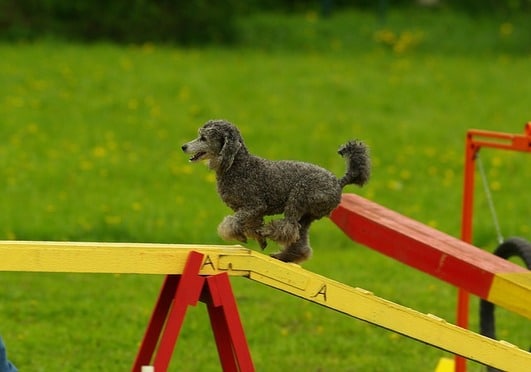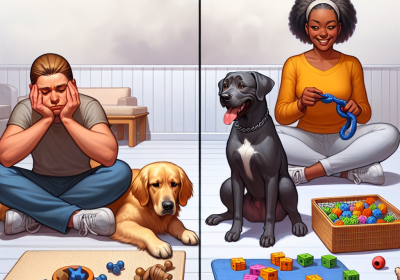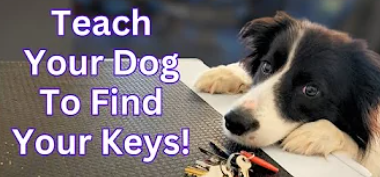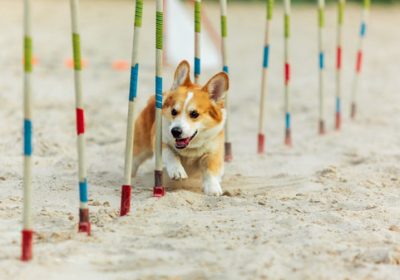Comprehensive list of the equipment you can use for dog agility training

Dog agility training is an exciting and dynamic sport that involves a dog and handler navigating an obstacle course in a race against the clock.
It requires both mental and physical dexterity from the dog, as well as clear communication and guidance from the handler. To effectively train and compete in dog agility, having the right equipment is essential.
In this article, we will provide a comprehensive list of the equipment you can use for dog agility training to help you get started on your agility journey.
Jumps:
Jumps are one of the fundamental pieces of equipment in dog agility. They come in various styles, including bar jumps, tire jumps, and panel jumps. Bar jumps consist of horizontal bars that the dog must clear, while tire jumps feature a suspended tire for the dog to jump through. Panel jumps consist of solid panels that the dog must jump over. Jumps help improve a dog’s jumping technique, agility, and speed.
Weave Poles:
Weave poles are a challenging but essential piece of equipment in agility training. They consist of a series of vertical poles that the dog must navigate in a weaving motion. Weave pole training helps enhance a dog’s agility, coordination, and concentration. Start with a few poles and gradually increase the difficulty as your dog becomes more proficient.
Tunnels:
Tunnels are a thrilling obstacle in agility courses. Dogs must enter a collapsible tunnel and navigate through it to reach the other end. Tunnels can be straight or curved, and they help improve a dog’s confidence, speed, and spatial awareness. You can also add chute attachments to tunnels to make them more challenging.
A-Frame:
The A-frame is a large triangular obstacle with a steep incline and decline. Dogs must climb up one side, reach the top, and descend down the other side. The A-frame helps develop a dog’s balance, confidence, and hind-end awareness. It is essential to introduce the A-frame gradually to prevent injuries and build trust.
Dog Walk:
The dog walk is a long, narrow plank elevated off the ground with ramps at each end. Dogs must walk across the plank, up and down the ramps. The dog walk improves a dog’s balance, coordination, and focus. Like the A-frame, it should be introduced gradually and with proper training techniques.
Teeter-Totter:
The teeter-totter, also known as the seesaw, is a balancing obstacle. Dogs must walk up a plank that pivots on a fulcrum, causing the other end to lower. The dog must maintain balance as the plank tilts. The teeter-totter helps develop a dog’s confidence, balance, and body awareness. Proper introduction and training are crucial to prevent fear or injuries.
Pause Table:
The pause table is a platform where dogs must stop and sit or lie down for a designated period. It helps teach dogs to maintain focus, control, and obedience during agility runs. The pause table can be used for rest breaks or to execute specific maneuvers during a course.
Contact Zone Training Equipment:
Contact zones are specific areas on obstacles where dogs must touch with at least one paw. The contact zones typically have different colors or textures to differentiate them from the rest of the obstacle. Training equipment for contact zones includes rubberized or painted contact boards that can be placed on the A-frame, dog walk, and teeter-totter to teach dogs where to hit the target with their paws.
Tug Toys and Treats:
While not traditional agility equipment, tug toys and treats are essential tools for positive reinforcement training. Tug toys help motivate and reward dogs for their performance, while treats can be used to reinforce specific behaviors or as a reward after completing a course.
Training Cones and Markers:
Training cones and markers are useful for setting up practice courses or marking specific areas during training. They can be used to indicate the starting line, weave pole spacing, or boundary lines. Training cones and markers provide visual cues to both the dog and handler during training sessions.
Clickers and Target Sticks:
Clickers and target sticks are training aids that help with shaping and rewarding desired behaviors. A clicker is a small handheld device that makes a distinct clicking sound when pressed, indicating to the dog that they have performed the correct action. Target sticks are extendable rods with a ball or other target at the end. They can be used to guide the dog and encourage them to touch or follow the target.
Agility Tunnels and Chutes:
Agility tunnels and chutes are similar to regular tunnels but are designed to be more challenging. They may feature additional curves, longer lengths, or variations in texture. These obstacles require dogs to navigate through confined spaces and sharp turns, testing their agility and flexibility.
Tire Jump:
A tire jump is a circular frame with a suspended tire that dogs must jump through. It adds an extra level of difficulty compared to regular bar jumps. Dogs need to jump high enough to clear the tire without knocking it off the frame. Tire jumps improve a dog’s jumping accuracy, height, and coordination.
Hoop Jump:
Hoop jumps, also known as circle jumps or tire hoops, are similar to tire jumps but consist of a full circle without a tire. Dogs must jump through the hoop, demonstrating precise jumping skills and body control. Hoop jumps help improve a dog’s flexibility, agility, and focus.
Cavaletti Poles:
Cavaletti poles are adjustable poles that are placed at different heights and distances apart. Dogs must step over the poles, requiring them to lift their legs and maneuver carefully. Cavaletti pole training helps improve a dog’s coordination, balance, and stride length. It is particularly beneficial for working on footwork and gait control.
Chute Tunnels:
Chute tunnels are long, narrow tunnels made from fabric that constricts and creates a tunnel effect as the dog moves through it. Dogs must stay focused and navigate through the tight space, enhancing their agility and body awareness. Chute tunnels provide an additional challenge compared to regular tunnels.
Cambered Tunnels:
Cambered tunnels are tunnels with a curved shape. They introduce a different level of difficulty compared to straight tunnels as dogs need to adjust their body position and navigate the curve while maintaining speed and focus. Cambered tunnels improve a dog’s turning ability, balance, and coordination.
Balance Discs and Pods:
Balance discs and pods are unstable surfaces that dogs can stand or sit on. These equipment pieces help improve a dog’s core strength, stability, and body awareness. By practicing balance on these discs and pods, dogs develop better proprioception, which is crucial for navigating agility courses and preventing injuries.
Dog Agility Training Sets:
Dog agility training sets are comprehensive kits that include a combination of various agility equipment. They are designed to provide a complete agility training experience, allowing you to set up courses and practice different obstacles. Agility training sets are convenient for home use and offer versatility in training options.
Safety Equipment:
In addition to the agility equipment mentioned above, it is essential to prioritize safety during training sessions. Safety equipment may include non-slip mats to provide traction on slippery surfaces, padding or mats to cushion falls or jumps, and safety gates or fences to create a controlled training environment. Safety measures should be in place to protect both the dog and the handler during training.
Remember, when using agility equipment, it’s crucial to introduce each obstacle gradually and train at a pace suitable for your dog’s abilities. Seek professional guidance if needed and always prioritize positive reinforcement and safety. With the right equipment and proper training techniques, you and your dog can enjoy the exciting world of dog agility training.
Article suggested by “Dog Agility Sunshine Coast“





![The Dog Podcast Uncovers Startling Truths About What We Feed Our Dogs [Press Release]](https://yourtechnicalhub.com.au/wp-content/uploads/2024/08/dog-food-400x280.jpg)



